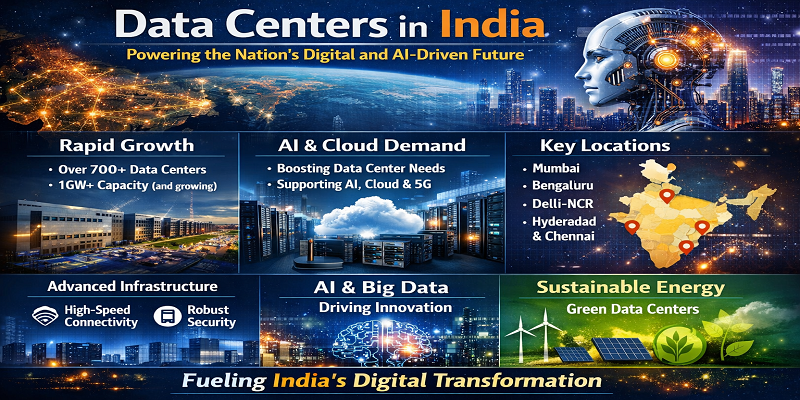Human-Computer Interaction (HCI) focuses on how humans interact with computers and how computer systems can be designed to be more intuitive, user-friendly, and accessible. Emerging technologies in HCI include natural language processing, gesture recognition, and brain-computer interfaces. The initiative can potentially lead to a remarkable breakthrough in robotics and artificial intelligence.
The Emergence of Human-Computer Interaction (HCI) Technology
The field of human-computer interaction (HCI) emerged in the early 1980s to explore how computers could be made more user-friendly. Over time, HCI has expanded to cover various aspects of information technology (IT). The introduction of the Macintosh by Apple in 1984 revolutionized computer usage, making it more accessible and simplifying communication through keyboard, mouse, and icon-based user interfaces.
Since its inception, HCI has grown significantly and continues to evolve as more knowledge about users and computers is acquired. New HCI methodologies are emerging with a focus on providing users with more options and adopting a more compassionate approach to accommodate diverse preferences, disabilities, and concerns. These methodologies aim to personalize interaction tools and processes to enhance the user experience.
Furthermore, HCI is also influenced by the rapid development of technologies used in phones, homes, and other personal devices, which are being adopted into sign systems at a faster pace. The possibilities of HCI are expanding exponentially, driven by advancements in technology and a growing understanding of user needs.
Concepts and Mechanisms of Human-Computer Interaction Technology
Human-computer interaction (HCI) technology is a multidisciplinary field that focuses on the design, development, and study of the interaction between humans and computers. HCI technology seeks to create intuitive, effective, and efficient ways for people to interact with computers and other digital devices. It encompasses a wide range of concepts, principles, and mechanisms aimed at improving the usability, accessibility, and overall user experience of computer systems.
Concepts of HCI Technology
User-Centered Design: HCI technology places the user at the center of the design process. It involves understanding the needs, abilities, and preferences of users and designing interfaces and interactions that meet those requirements. User-centered design involves user research, usability testing, and iterative design to ensure that the technology is designed with the user’s perspective in mind.
Interface Design: HCI technology focuses on designing interfaces that are visually appealing, easy to understand, and efficient to use. This includes considerations such as layout, color, typography, and feedback mechanisms, to ensure that the interface is aesthetically pleasing, informative, and responsive to user inputs.
Interaction Techniques: HCI technology encompasses various interaction techniques such as graphical user interfaces (GUIs), touch-based interfaces, voice-based interfaces, gesture-based interfaces, and virtual reality (VR) interfaces. These techniques allow users to interact with computers and other digital devices in natural and intuitive ways, enhancing the overall user experience.
Accessibility: HCI technology emphasizes designing interfaces and interactions that are accessible to users with disabilities, such as visual impairments, hearing impairments, motor impairments, and cognitive impairments. This involves incorporating features such as screen readers, closed captioning, alternative input methods, and other accessibility tools to ensure that the technology is usable by a diverse range of users.
Mechanisms of HCI Technology
Input Devices: HCI technology encompasses a wide variety of input devices such as keyboards, mice, touchscreens, voice recognition systems, motion sensors, and haptic devices, which allow users to input commands and interact with computers and other digital devices.
Output Devices: HCI technology includes various output devices such as monitors, displays, speakers, printers, and haptic devices, which provide feedback and information to users based on their interactions with the system.
Feedback Mechanisms: HCI technology incorporates feedback mechanisms such as visual cues, sounds, vibrations, and haptic feedback, which provide users with information about the system’s state and the outcome of their actions. Feedback mechanisms are crucial for users to understand the results of their interactions and make corrections if needed.
Information Architecture: HCI technology involves organizing information in a logical and meaningful way to help users quickly understand and navigate through the system. This includes designing menus, icons, labels, and other information structures that facilitate users’ ability to find, retrieve, and manipulate information.
Cognitive Models: HCI technology includes cognitive models used to understand how users perceive, think, and learn when interacting with computers. These models help in designing interfaces and interactions that match users’ mental models and cognitive abilities, making the technology more intuitive and usable.
Context-Awareness: HCI technology incorporates context awareness, which refers to the ability of a system to understand and adapt to the user’s context, including their location, preferences, and tasks. Context awareness allows the system to provide personalized and relevant interactions, enhancing the user experience.
Summary: HCI technology encompasses a wide range of concepts and mechanisms aimed at designing effective, usable, and accessible interfaces and interactions between humans and computers. It involves understanding the needs and preferences of users, designing intuitive interfaces, incorporating various input and output devices, providing feedback, organizing information, and considering cognitive models and context awareness to create technologies that are user-friendly and enhance the overall user experience.
Using Cloud Infrastructure for Building Human-Computer Interaction Model
Building a human-computer interaction (HCI) model using cloud infrastructure can offer several advantages, including scalability, cost-efficiency, and ease of deployment. Here are some steps you can follow to build an HCI model using cloud infrastructure:
Define the Scope and Requirements: Begin by clearly defining the scope of your HCI model and identifying the requirements, such as the type of interaction you want to enable (e.g., voice commands, gestures, facial recognition), the data you need to collect and process, and the expected performance and latency of the model.
Choose the Right Cloud Provider
Evaluate different cloud providers based on their offerings, such as machine learning (ML) platforms, data storage, compute resources, and pricing models. Popular cloud providers for ML include Amazon Web Services (AWS), Google Cloud Platform (GCP), Microsoft Azure, and IBM Watson. Choose a provider that aligns with your requirements and budget.
Prepare Data
Collect, preprocess, and store the data you need for training your HCI model in the cloud. This may include audio, image, or sensor data, depending on the type of interaction you want to enable. Ensure you handle data privacy and security considerations, such as anonymization and compliance with relevant regulations.
Train the HCI Model
Use the ML capabilities of the cloud provider to train your HCI model. This may involve selecting an appropriate ML algorithm, setting hyperparameters, and feeding the data into the model for training. Cloud providers often offer managed ML services that can simplify the training process, such as AWS SageMaker, GCP AI Platform, or Azure Machine Learning.
Evaluate and Optimize
Once the model is trained, evaluate its performance against your defined requirements. Fine-tune the model as needed, and optimize it for inference, taking into consideration factors such as latency, accuracy, and resource utilization. This may involve using techniques like model quantization, compression, or distributed inference to improve the model’s efficiency.
Deploy the HCI Model
Once satisfied with the model’s performance, deploy it in the cloud infrastructure. This may involve creating an API or a serverless function that exposes the model for real-time inference or deploying the model to edge devices for offline or low-latency interactions. Cloud providers often offer deployment options like AWS Lambda, GCP Cloud Functions, or Azure Functions for serverless deployments.
Monitor and Maintain
Continuously monitor the performance of your HCI model in production, and update it as needed to maintain its accuracy and efficiency. Cloud providers often provide monitoring and logging capabilities that can help you track the performance and health of your deployed model. Make sure to follow best practices for model maintenance, including versioning, backup, and security updates.
Scale and Iterate
Cloud infrastructure allows you to easily scale your HCI model to handle increasing demands or accommodate new features. You can leverage the auto-scaling capabilities of cloud providers to automatically adjust resources based on usage patterns. Additionally, iterate on your model based on user feedback and evolving requirements to continuously improve the HCI experience.
Building an HCI model using cloud infrastructure can provide you with the flexibility, scalability, and cost-efficiency needed to develop and deploy sophisticated human-computer interaction capabilities. However, it’s important to carefully consider data privacy, security, and compliance requirements, and follow best practices for model training, deployment, monitoring, and maintenance to ensure a robust and reliable HCI solution.
Future of Human-Computer Interaction Conceptualization
The field of Human-Computer Interaction (HCI) is continuously evolving and is expected to undergo several significant changes in the future. Here are some potential trends and concepts that could shape the future of HCI conceptualization:
Natural and Immersive Interactions
HCI is moving towards more natural and intuitive ways of interacting with computers, leveraging technologies such as voice recognition, gesture recognition, augmented reality (AR), and virtual reality (VR). Future HCI systems may enable users to interact with computers in more immersive and intuitive ways, mimicking real-world interactions and reducing the reliance on traditional input devices like keyboards and mice.
Multimodal Interaction
Multimodal interaction, which involves combining multiple modes of input (such as touch, voice, and gesture) and output (such as visual, auditory, and haptic feedback), is expected to become more prevalent in future HCI systems.
This could allow for more flexible and adaptable interactions, accommodating users with diverse abilities, preferences, and contexts. Scientists are already trying to combine these features for making an entirely virtual environment closer to reality.
Context-aware Computing
HCI systems of the future are likely to be more context-aware, able to understand and adapt to users’ contexts, such as their location, environment, and emotional state. This could enable personalized and adaptive interactions, where systems dynamically adjust their behavior based on the user’s context, preferences, and goals.
Human-Centered Design
Human-centered design principles will continue to play a crucial role in HCI conceptualization. Future HCI systems should be designed with a deep understanding of human needs, capabilities, and limitations. User-centered design methodologies, such as involving users in the design process and conducting usability testing, will continue to be important to create HCI systems that are intuitive, usable, and enjoyable.
Ethical and Responsible HCI
With the increasing integration of HCI systems into our daily lives, ethical and responsible design practices will become even more critical. Future HCI conceptualization should consider ethical implications, such as data privacy, fairness, transparency, and accountability. Designing systems that promote inclusivity, accessibility, and diversity will be important to ensure that HCI benefits all users, regardless of their background or abilities.
AI and Machine Learning
Artificial intelligence (AI) and machine learning will likely play a significant role in the future of HCI. Advanced AI techniques, such as machine vision, natural language processing, and predictive analytics, can enable more intelligent and proactive interactions between humans and computers. There will be no barriers between computers and humans.
AI-powered HCI systems could learn from user behavior, preferences, and feedback, and adapt their responses accordingly. In fact, AI and natural language processing already play an integral role in the functions of the human-computer interaction model.
Social and Collaborative Computing
HCI systems of the future may focus more on enabling social interactions and collaboration among users. Social computing, which involves designing systems that facilitate communication, cooperation, and coordination among users, could be an important area of future HCI conceptualization. Collaborative interfaces and tools that support group work, remote collaboration, and social interactions could become more prevalent.
Ubiquitous and Wearable Computing
Ubiquitous computing, where computing is seamlessly integrated into our everyday environment and activities, is expected to continue to advance. Wearable computing, which involves incorporating computing devices into our clothing, accessories, and body, could also become more prevalent. These trends could lead to more pervasive and seamless interactions with computers, making technology an integral part of our daily lives.
Human Augmentation
HCI systems could also focus on augmenting human abilities and cognition. Technologies such as brain-computer interfaces, neurofeedback, and exoskeletons could enhance human capabilities, enabling new interactions and experiences. Human augmentation could have significant implications in areas such as healthcare, education, and entertainment.
Sustainability and Green Computing
As sustainability becomes a more pressing global concern, HCI conceptualization may also focus on designing systems that are environmentally friendly and energy-efficient. Green computing involves reducing the environmental impact of computing technologies.
Recent Post
Send this to a friend

 Server
Colocation
Server
Colocation CDN
Network
CDN
Network Linux
Cloud Hosting
Linux
Cloud Hosting Kubernetes
Kubernetes Pricing
Calculator
Pricing
Calculator
 Power
Power
 Utilities
Utilities VMware
Private Cloud
VMware
Private Cloud VMware
on AWS
VMware
on AWS VMware
on Azure
VMware
on Azure Service
Level Agreement
Service
Level Agreement 



















